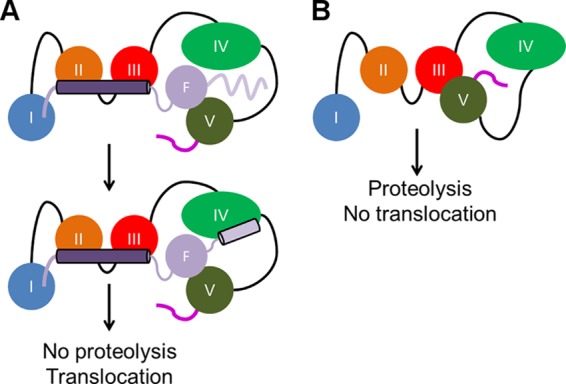FIGURE 9.

Mechanism by which CagF causes CagA translocation. A, CagF (F) uses the coiled coil (dark purple cylinder) to bind domains II-III and makes further contacts to domains I and V of CagA. Binding triggers folding of the CagF C-terminal helix (light purple line and cylinder), which contacts domain IV. B, in the absence of CagF, domain V self-associates with domain III, burying the C-terminal secretion peptide (magenta line), leading to no translocation of CagA into host gastric epithelial cells and extensive proteolysis. Overall, CagF prevents self-association of domain V to domain III, exposing the C-terminal secretion peptide.
